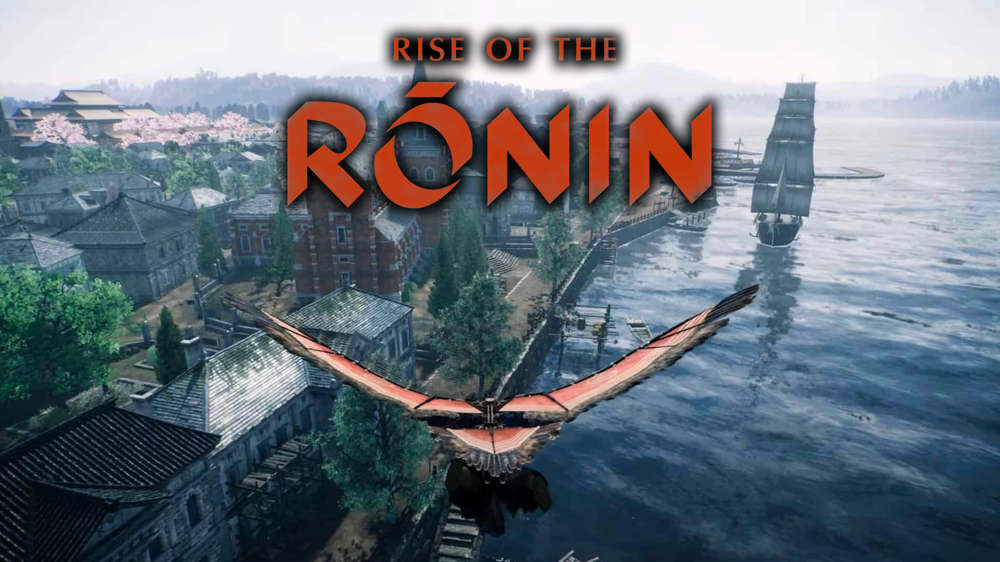Stray Blade preview: A vibrant world lacking combat nous
We've played Stray Blade, a new Soulslike action RPG with bright and colourful graphics, a lost civilisation to explore, and unique combat.

Tarran Stockton
22nd Mar 2023 10:56
Images via Point Blank Games

Trends come and go frequently in gaming, with individual games often having cascading effects that can last for years as publishers and developers alike fight to replicate what made something special, popular, or innovative. Right now, that thing is the Soulslike, a subgenre of the action RPG that was popularised by From Software's Dark Souls series and the behemoth that was Elden Ring.
Many different developers have tried to move into this space, with successes like the 2D Hollow Knight carving out its own niche, and others like Steelrising failing to be anything more than derivative. Stray Blade is an action adventure game that seems at risk of being the latter, but after a few hours of trying it out, there's more under the hood here that could be worth investigating for those who love the Soulslike genre and the unique experiences it provides.
So uncivilised

Stray Blade gets right down to business with a quick cutscene that establishes your character, Farren, and the land of Acrea. Essentially, you are an anthropologist exploring the ruins of a long-lost civilisation, until you are ambushed and awake weaponless with a strange stone in your chest.
Not too long after, you find yourself being guided through the ruins by a moving light, which eventually reveals itself to be a half-wolf sage called Boji. Serving as an exposition machine, Boji explains that the stone embedded in Farren's chest has bound them to this land, stopping them from dying and leaving.
From there, the goal becomes simple: work your way through the lost civilisation, defeat the God-Kings that control the land, and find Boji's creator who can free you from the stone once and for all.
It's a fairly standard set-up, and it may indulge in the whole life/death theme that's become too commonplace in Soulslikes, but it's an effective introduction to the world of Acrea that still allows it to hold the mysteries at its core.
It's too early to say how well-designed and richly detailed the civilisation is, but having the main character be an anthropologist gives them a chance to really dive deep into the historical aspect as you uncover the world. Considering how many titles in the space prefer to imitate aspects of Dark Souls, having lore that's less cryptic and easier to learn about is also a welcome change, and one that fits with the characterisation of our protagonist.
It's also worth mentioning how bright and stylised everything is. Stray Blade eschews the grimdark aesthetic and mood of something like Dark Souls or Bloodborne by going all in with a vivid and brightly coloured art style reminiscent of Kingdoms of Amalur or League of Legends. I can see some people casting judgement straight away due to this art style, but it's the right move by the devs to help set the game apart and embrace itself as a more accessible action adventure game.
A different way to fight

One key way in which Stray Blade sets itself apart from its inspirations and other games looking to enter this genre, is how the mechanics of combat work - although it's clearly still a work in progress.
It still features the standard third-person perspective with lock-on, but enemy attacks come with coloured indicators that dictate how you should respond. A yellow symbol means you need to dodge, while a blue one signals a chance to parry, and while the first few enemies will have one attack type, subsequent enemies switch this up regularly. Successfully landing a dodge or parry at the best time will also affect an enemy's poise and stamina of an enemy, throwing them off guard and setting you up to land a killing blow.
The combat puts the emphasis on an enemy's stamina over its health, forcing you to play with more awareness and guile. It quickly discourages the button-mashing style of play that poorly designed action games can accidentally facilitate. Sadly it doesn't really work properly, at least in our preview.
Stray Blade suffers from a degree of jankiness, and it makes combat tough to love when it's not working as it should. To start with, hits have little weight to them, both from a sound design perspective and in terms of how it feel to land a blow, as most enemies will just shrug off attacks and complete their animations regardless. While this is likely to encourage players to try the dodge/parry gameplay loop more, it just feels artificially limiting and makes the whole aesthetic of the combat suffer.
Locking on can be hit or miss, too, and animations can feel clunky in all the wrong ways. Here's hoping these things are tweaked before launch.
Sage wisdom

Stray Blade is in a tough position right now, but there's a lot of potential for the final product to be a worthy entry into Soulslikes that focuses on being accessible without sacrificing the challenge that people flock to the subgenre for.
A few hours in some of the major issues of the game have begun to rear their head, with the broken combat being the biggest problem, but there's promise to be found in the early world-building, colourful aesthetic, and balance between accessibility and challenge. Don't expect anything groundbreaking, but if Point Blank Games can spend some time ironing out the kinks, there's a decent game here to sink your teeth into.
Code provided by publisher. Previewed on PC.

About The Author
Tarran Stockton
Tarran is a Senior Guides Writer at GGRecon. He previously wrote reviews for his college newspaper before studying Media and Communication at university. His favourite genres include role-playing games, strategy games, and boomer shooters - along with anything indie. You can also find him in the pit at local hardcore shows.





















